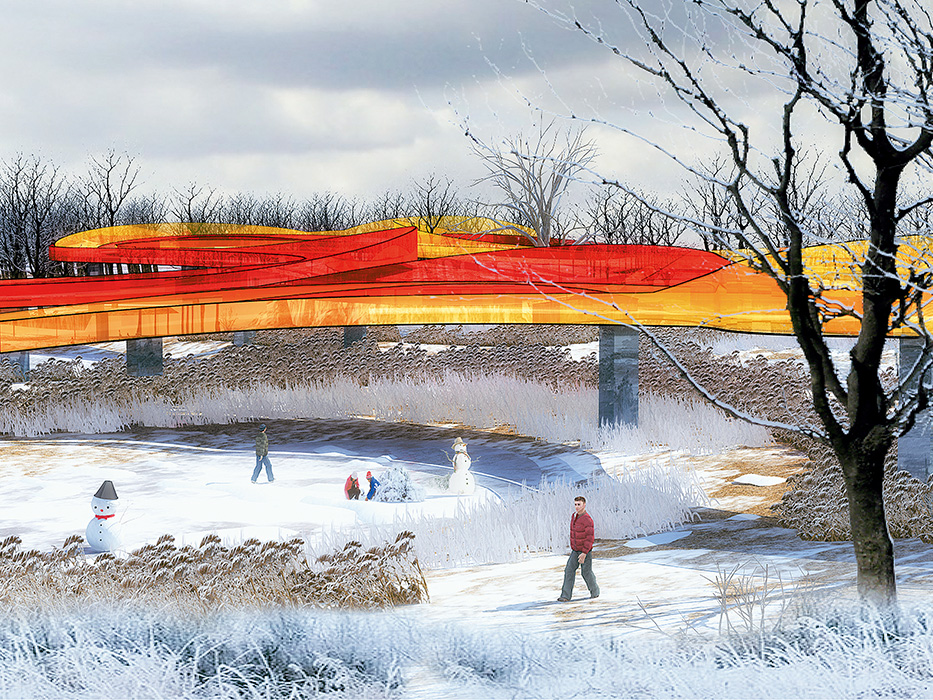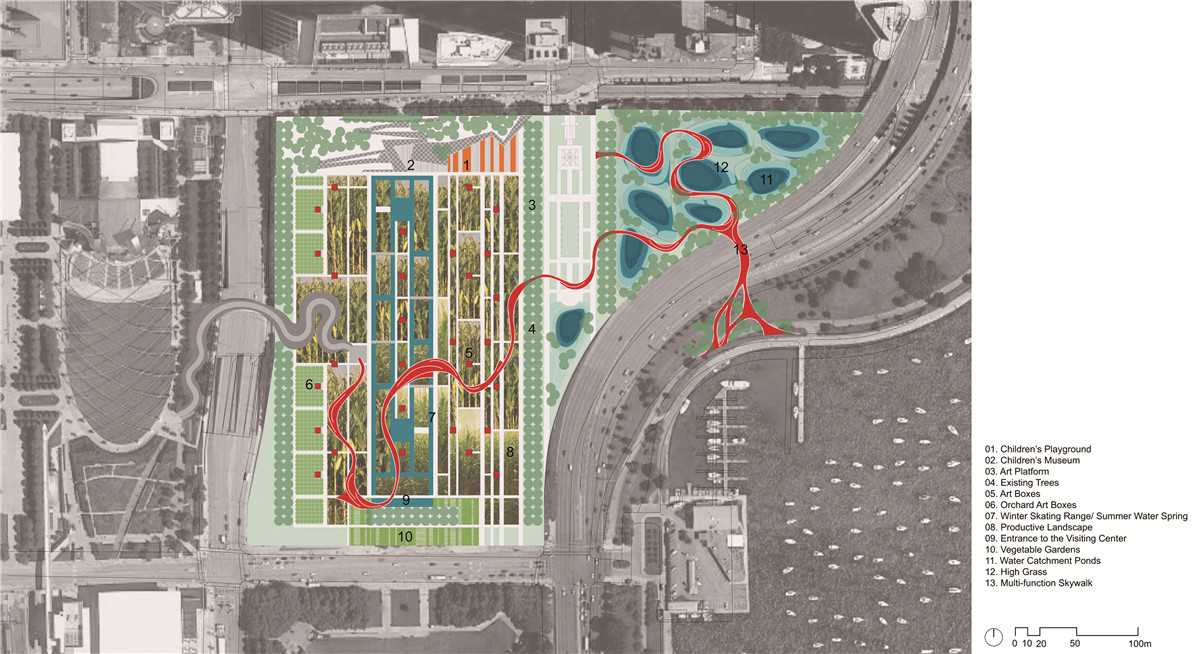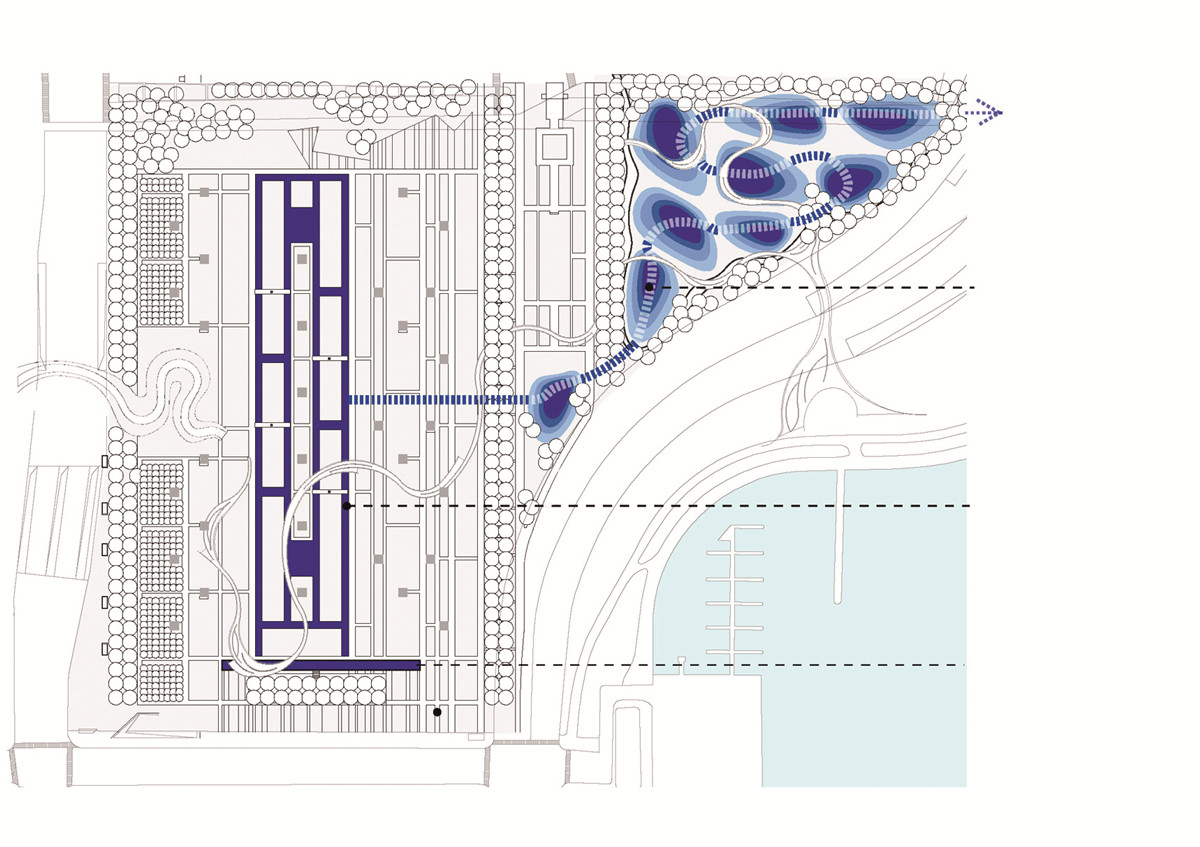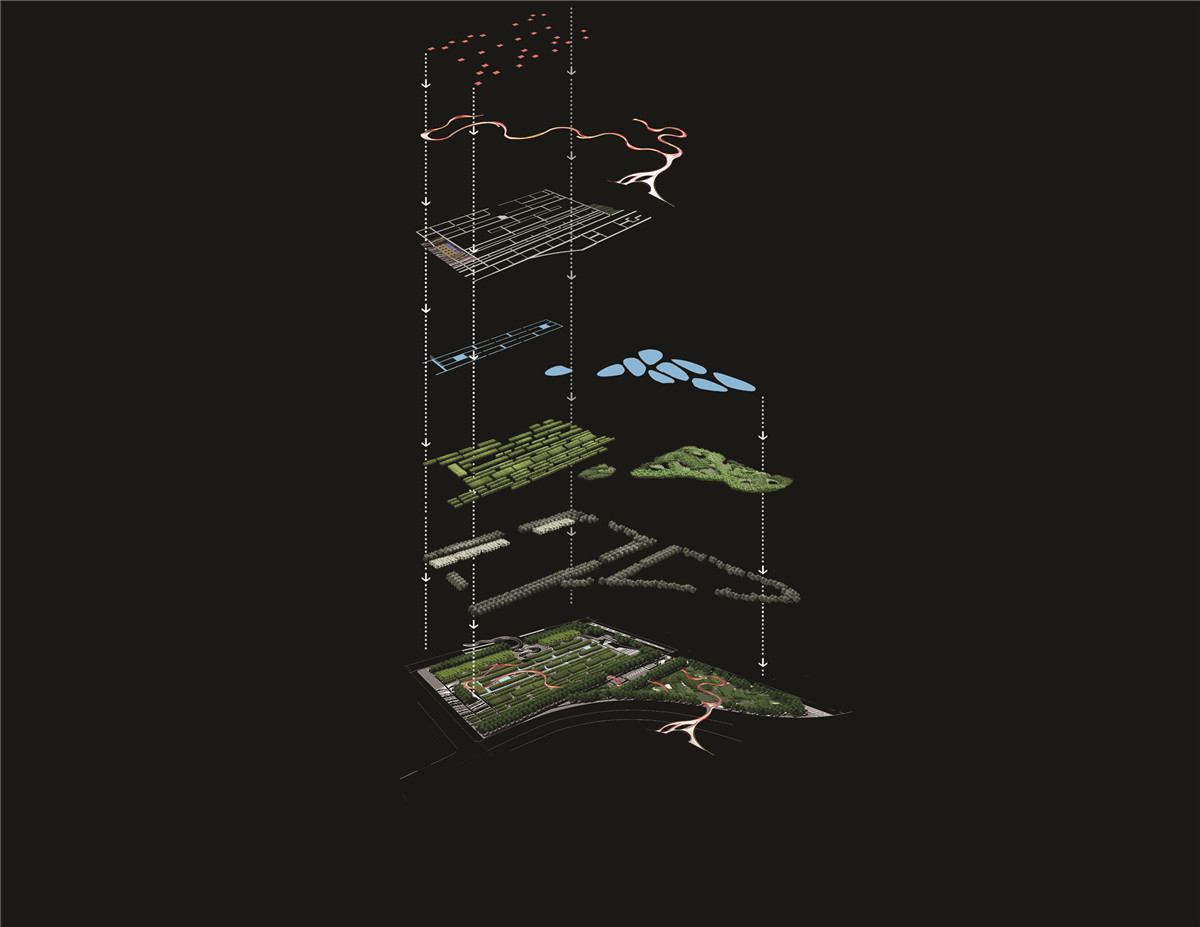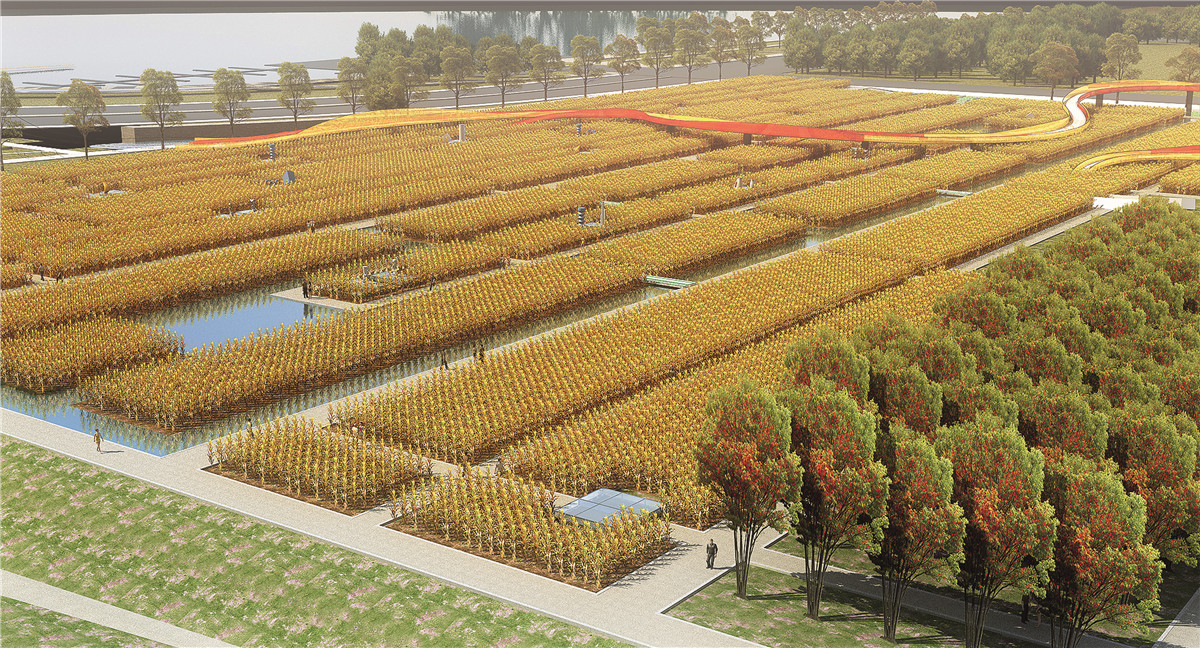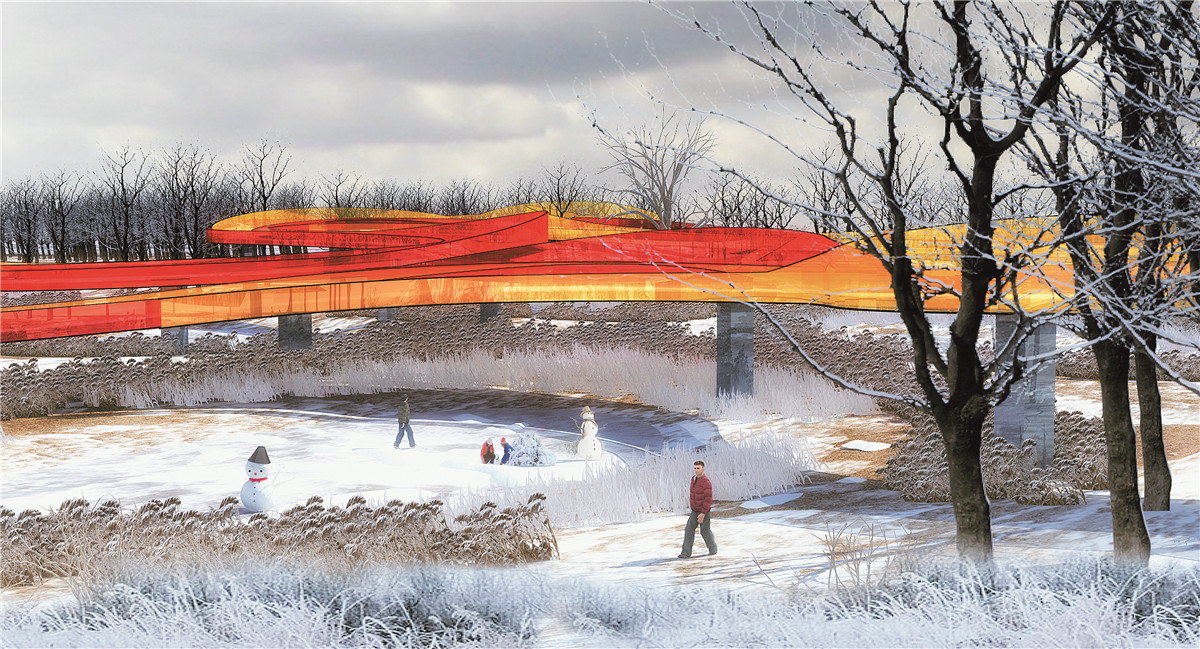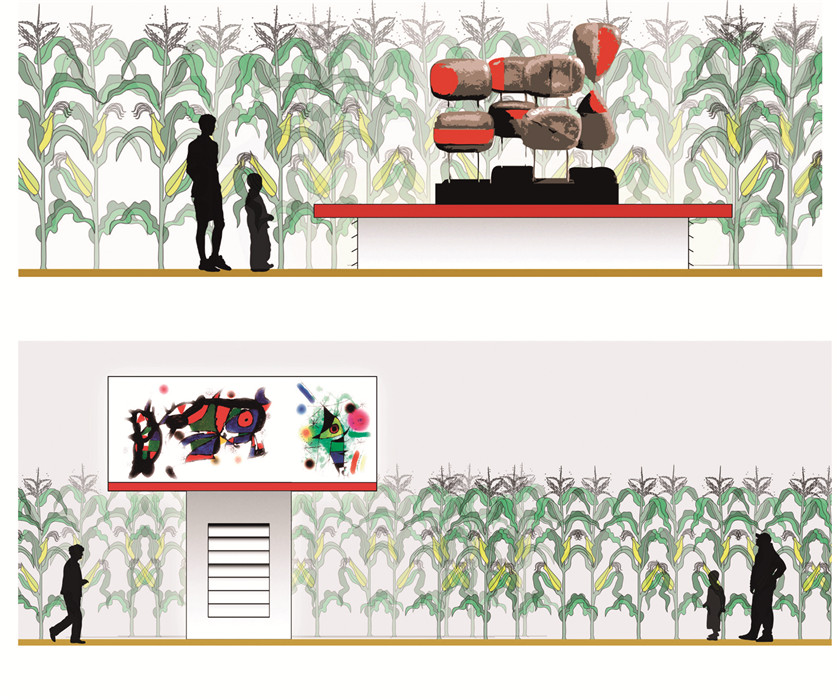Chicago North Grant Park
Project Information
- Project Location:
- USA Chicago
- Project Scale:
- 10.7 Hectares
- Design Time:
- August 2009
- Build Time:
- 2010
- Client:
- Chicago North Grant Park
Project Profile
1. Project Statement
This proposal is a shortlisted entry for the international design competition for North Grant Park in Chicago.
The design is a collaboration between Beijing Turenscape Landscape and Architecture Planning and Design Institute and JJR, USA.
North Grant Park in Chicago—Field of Art—is envisioned as a cultural symbol and a backdrop for the natural cycles of the urban landscape. Using cornfields as the primary landscape substrate, the design pays homage to Chicago's agricultural heritage and showcases a regenerative agricultural process. Amidst the growing crops, various activities such as art exhibitions, performances, children's playgrounds, ice skating, gatherings, and tours will change with the seasons. The annual planting and harvest will become community events, symbolizing Chicago's dynamic renewal. Correspondingly, the Field of Art will become a prime venue for witnessing and enjoying the city's progress.
2. Objective and Challenge
Successfully intervening in the existing urban environment, North Grant Park in Chicago faces four major challenges:
1) Historical Context:
The project must respect its historical environment and background, considering connections at multiple scales: with the surrounding environment, the city, the region, and the nation. Historical axes and the architectural history and fabric of Chicago will be preserved, as the city's architecture has influenced the world.
2) Sustainability:
In an era of global concern for ecology and the environment, understanding sustainability at all scales is crucial for the project's success. The proposal emphasizes sustainable design, incorporating advanced methods to enhance the city's sustainable image.
3) Temporary Nature of the Site:
The site is above an underground parking garage with temporary characteristics and limited load capacity. With planned renovations to the parking area, the square and greenery will also be removed. The new park must feature adaptive vegetation and design, providing feasible technical solutions for both short- and long-term maintenance.
4) Diverse User Needs:
Addressing the diverse needs of different groups is essential to transform the currently underutilized eastern end of North Grant Park.
The design for the Field of Art in Chicago addresses these challenges, presenting an exciting opportunity to create a world-class, multifunctional park in the city's central area.
3. Design Strategy
3.1 Concept and Layout
North Grant Park is positioned as a productive landscape, where nature serves as a backdrop and canvas for human interaction and cultural exchange. Diverse built elements, including art boxes, elevated walkways, and viewing platforms, function as both stage props and scenic points. The park's diverse vegetation is selected for its agricultural value or restorative function. Orchards, farmland, and a vegetable garden are productive elements that benefit the broader community. The park design incorporates rainwater collection for irrigation, establishing wetlands in low-lying areas to provide natural habitats for birds and other wildlife while purifying water before it flows into Lake Michigan.
North Grant Park is divided into three sections, separated by north-south tree lines preserved on the site. From the serpentine pedestrian bridge at Millennium Park to the Lake Michigan shoreline, the three areas are connected by winding elevated walkways. Ground pathways further integrate the productive landscape, offering opportunities for encounters and large gatherings.
1) Field of Art:
The largest area on the west side features cornfields as the primary productive landscape. The south end includes a vegetable garden and an underground souvenir shop. The west side has a series of orchards, and the north edge includes a planned children's museum and outdoor playground integrated into the productive landscape.
2) Cancer Survivors Garden:
Adjacent to the western cornfield is the renowned Cancer Survivors Garden, which is proposed to be retained.
3) Chicago Wetland:
East of the Cancer Survivors Garden, the low-lying area currently known as Peanut Park is an ideal rainwater collection area. Designed as a wetland, it will buffer North Grant Park from the busy lakeshore drive. The eastern boundary will feature a viewing platform overlooking the wetland plants, reintroducing "Chicago" through the representation of wild onions, as named by Native Americans.
The eastern section of North Grant Park is also productive, serving as a protective wetland providing animal habitats. The natural conditions will be preserved, creating a sanctuary for fragile urban flora and fauna. Elevated walkways and lakeside viewing platforms allow visitors to appreciate the restored natural environment without disturbing the wildlife.
3.2 Design Strategy
North Grant Park is treated as a complex system, considering engineering feasibility, practical functions, and site potential. The design maximizes the park's value to the city and its people through five main strategies, creatively addressing each challenge and incorporating flexible spaces to enrich the overall plan.
Design Strategy 1: Agricultural and Adaptive Landscapes
Cornfields serve as a cultural totem, providing flexible space usage, crop replacement, and low maintenance. Emphasizing natural life cycles, the cornfields reconnect the city with the land and maintain high-potential adaptive landscapes that continually engage Chicagoans.
Design Strategy 2: Rainwater Collection
Water is introduced into the landscape as a regenerative process, vital for life. It will be used in major activity areas, offering a tranquil, interactive space. The water system comprises four main elements: central water channels, waterfalls, wetland ponds, and purification streams.
Design Strategy 3: Geometric Texture
Inspired by Chicago's architectural heritage, the design emphasizes geometric patterns, integrating the Cancer Survivors Garden and responding to surrounding elements with features like waterfalls and water channels.
Design Strategy 4: Elevated Walkways
A gracefully curving elevated walkway connects the park to Millennium Park and the lakeshore, enhancing connectivity and providing elevated viewing opportunities while minimizing ground-level disturbances.
Design Strategy 5: Art Exhibitions
Art is integrated into the landscape through 30 exhibition sites in three types: orchard display boxes, cornfield display boxes, and elevated multimedia art boxes. This approach introduces a cyclical process of temporary art exhibitions, engaging visitors and artists in an active community.
4. Conclusion
The layered design of North Grant Park's landscape elements provides deeper meaning and a richer experience. The juxtaposition and adjacency of diverse features create unexpected connections, prompting reflections on urban and environmental roles. The park encourages appreciation of inherited heritage and recognition of the positive impact on the world. Ultimately, the Field of Art aspires to be an actively vibrant park where Chicagoans celebrate community efforts through meaningful and valuable celebrations.
